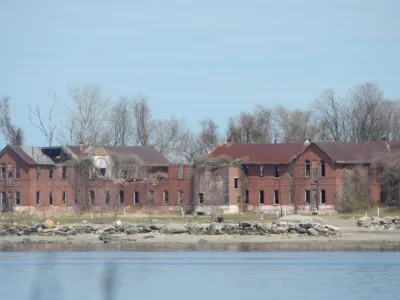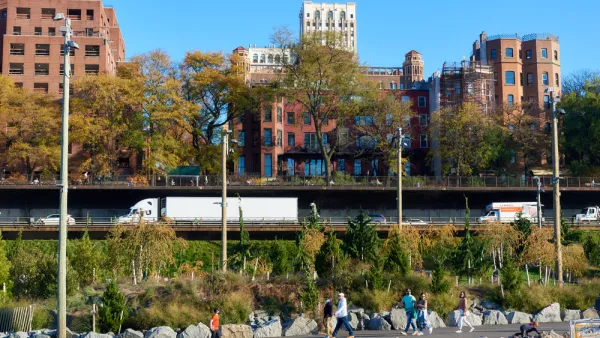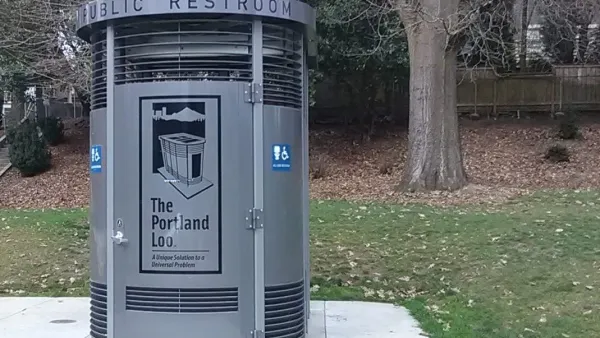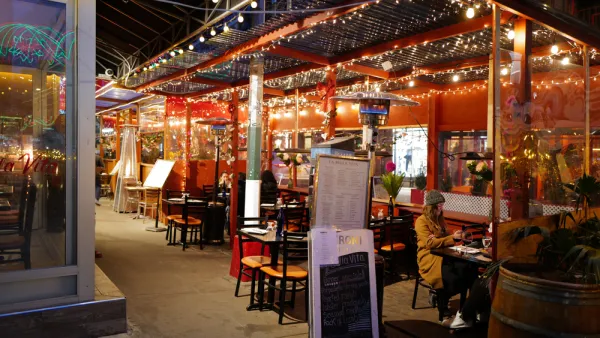Managed for decades by the Department of Corrections, the island could soon become a public park with regular ferry service and expanded visiting hours.

First used in 1869 as a public cemetery for unclaimed bodies and remains of the indigent, New York's Hart Island, home to the remains of over one million people and the nation's largest public cemetery, has a long-held reputation as the final resting place for the unidentified, the poor, and victims of epidemics like the 1918 flu pandemic and the AIDS crisis. During the height of the COVID-19 pandemic, as many as ten percent of New York's COVID victims were buried in one of the island's mass graves. Family members wanting to visit relatives' gravesites at the notorious 'potter's field' could choose one of two options, "both of which operate on predetermined schedules: monthly gazebo visits for any member of the public and monthly gravesite visits for family." Brody Ford reports on the effort to redesign the island, honoring the dead while making it a public amenity for the living.
After years of being managed by the state's Department of Corrections, Hart Island was handed over to the city's Parks Department this month. "Making it a more accessible and inviting space will be a challenge given the island’s deteriorating buildings, ongoing burials and the need to establish a regular ferry service to the island," writes Ford. "More than $50 million has been allocated for the destruction of many of these structures and creation of new burial space," and "[m]any advocates envision full public accessibility with a museum to honor generations of often marginalized and forgotten New Yorkers."
For visitors like Kimberly Overton, the transition is promising. "It was nice to see a park ranger uniform and not a correctional officer," she said, but her visit was still guided by strict rules. The Parks department says they are still "determining what public access looks like post-pandemic," weighing plans to increase public access with the need to maintain the island's role as an active municipal cemetery. "The Parks Department is waiting on a city study of burial capacity before sketching up further plans, and a framework to improve transportation access is due next year."
FULL STORY: The Biggest Public Graveyard in the U.S. Is Becoming a Park

Analysis: Cybertruck Fatality Rate Far Exceeds That of Ford Pinto
The Tesla Cybertruck was recalled seven times last year.

National Parks Layoffs Will Cause Communities to Lose Billions
Thousands of essential park workers were laid off this week, just before the busy spring break season.

Retro-silient?: America’s First “Eco-burb,” The Woodlands Turns 50
A master-planned community north of Houston offers lessons on green infrastructure and resilient design, but falls short of its founder’s lofty affordability and walkability goals.

Test News Post 1
This is a summary

Analysis: Cybertruck Fatality Rate Far Exceeds That of Ford Pinto
The Tesla Cybertruck was recalled seven times last year.

Test News Headline 46
Test for the image on the front page.
Urban Design for Planners 1: Software Tools
This six-course series explores essential urban design concepts using open source software and equips planners with the tools they need to participate fully in the urban design process.
Planning for Universal Design
Learn the tools for implementing Universal Design in planning regulations.
EMC Planning Group, Inc.
Planetizen
Planetizen
Mpact (formerly Rail~Volution)
Great Falls Development Authority, Inc.
HUDs Office of Policy Development and Research
NYU Wagner Graduate School of Public Service




























